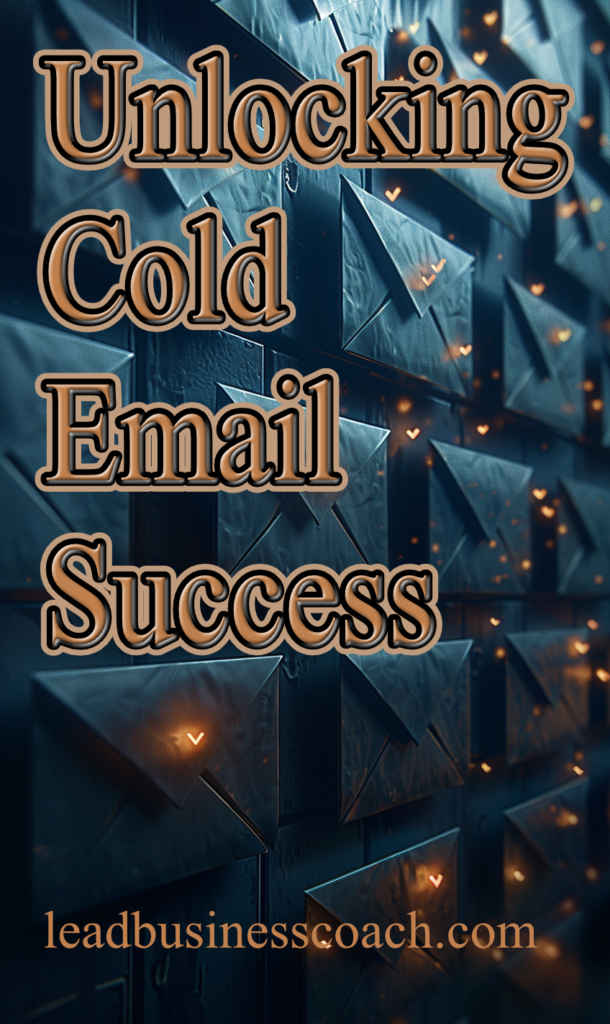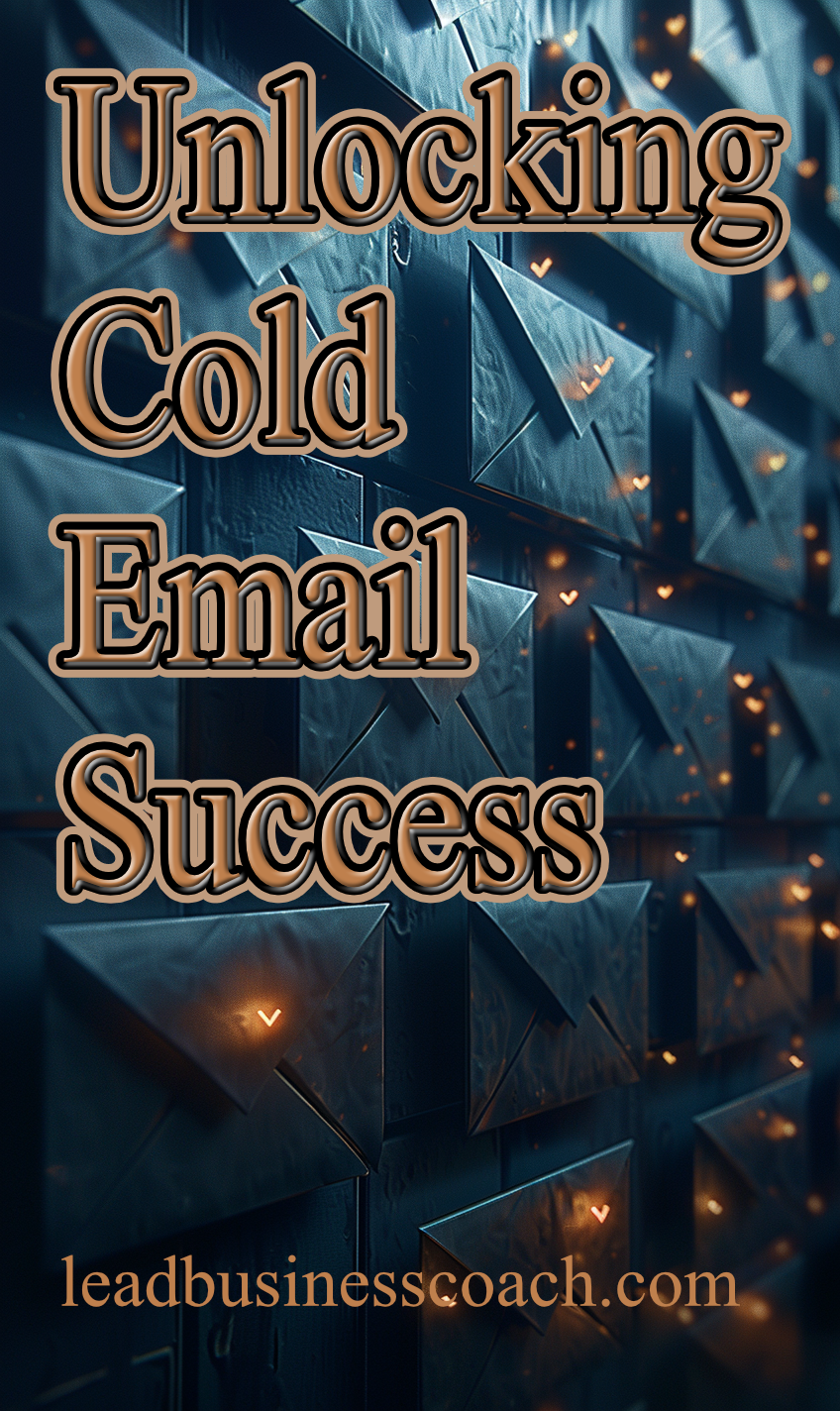Table of Contents
- Introduction
- Understanding Cold Email Lists
- Definition and Importance
- Legal and Ethical Considerations
- Building or Acquiring a Cold Email List
- Benefits of a Cold Email List
- Cost-Effectiveness
- Direct Outreach
- Personalization and Segmentation
- Scalability
- Success Stories
- Crafting Successful Cold Emails
- Subject Line
- Content
- Call-to-Action
- Follow-Up
- Expanding Your Home-Based Business with Cold Emails
- Reaching Untapped Markets
- Building Partnerships
- Gathering Feedback
- Best Practices for Cold Email Campaigns
- Campaign Management and Organization
- A/B Testing
- Metrics Tracking
- Overcoming Challenges
- Conclusion
- Call to Action

Attracting new clients is crucial for any business, and cold emailing is a marketing strategy that can help home-based businesses reach new potential customers. Cold emailing involves sending unsolicited emails to people who have never interacted with your business before. While cold emailing can be an effective way to reach new clients, it is important to understand the ethical and legal considerations. In this article, we will explore the benefits of cold email lists for home-based businesses and provide tips for crafting successful cold emails.
Understanding what a cold email list is and how to build or acquire a quality list is essential for a successful cold email campaign. A cold email list is a database of email addresses that have been collected without the recipient’s consent. To avoid legal issues, it is important to ensure that the email addresses on your list are acquired ethically and that you comply with anti-spam laws. Helpful Tip: Consider building your own list by offering a lead magnet or opt-in incentive on your website.
One of the biggest benefits of cold emailing is its cost-effectiveness compared to other marketing strategies. Direct outreach to decision-makers and the ability to personalize and segment emails for different audiences can increase the response rate. Cold emailing is also scalable, making it easy to scale your business as it grows. We will share a few success stories and case studies of home-based businesses that have thrived by using cold email lists effectively.
Helpful Tip: Keep track of metrics like open rate, response rate, and conversion rate to measure the success of your cold email campaigns.
Key Takeaways
- Cold emailing can be an effective way for home-based businesses to reach new potential customers.
- Building or acquiring a quality cold email list is essential for a successful cold email campaign.
- Crafting compelling subject lines, engaging email content, and clear calls-to-action are key to successful cold email campaigns.
Understanding Cold Email Lists
As a home-based business owner, it’s important to understand what a cold email list is and how to use it effectively. A cold email list is a collection of email addresses of individuals or businesses that have not previously interacted with your brand. Cold emailing involves reaching out to these individuals with a personalized email to introduce your business, product, or service.
Defining Cold Email Lists
Cold email lists can be built or acquired. Building a cold email list involves identifying potential customers and collecting their email addresses through various means such as website sign-ups, social media, or events. Acquiring a cold email list involves purchasing a list from a third-party provider. However, it’s important to note that acquiring email lists without explicit consent from the individuals on the list is illegal in some countries.
Legal and Ethical Considerations
When building or acquiring a cold email list, it’s important to consider legal and ethical implications. In some countries, sending unsolicited emails to individuals without their consent is illegal and can result in hefty fines. Additionally, sending irrelevant or spammy emails can damage your brand’s reputation and result in a high unsubscribe rate.
Building or Acquiring Email Lists
Building a quality cold email list involves identifying your target audience and collecting email addresses from relevant sources. This can include website sign-ups, social media, events, or even purchasing a targeted list from a reputable provider. Acquiring email lists from third-party providers can be a quick way to start a cold email campaign, but it’s important to ensure that the provider has obtained explicit consent from the individuals on the list.
Benefits of a Cold Email List

As a home-based business, leveraging cold email lists can offer several benefits. Here are some of the key advantages of using cold emails as a marketing strategy:
Cost-Effectiveness
Cold emailing is a highly cost-effective marketing strategy. It costs almost nothing to send an email, and with the right cold emailing tools, you can easily send hundreds, or even thousands of messages at once. This makes it an excellent option for businesses with limited marketing budgets.
Direct Outreach
Cold emailing allows businesses to directly reach decision-makers. Unlike other marketing strategies, cold emails cut through the noise and go straight to the people who have the power to make purchasing decisions. This can be especially beneficial for home-based businesses that may not have the resources to attend industry events or conferences.
Personalization and Segmentation
Cold emails can be personalized for different segments, increasing the response rate. By segmenting your email list and tailoring your message to each group, you can make your cold emails more relevant and engaging. This can lead to higher open rates, click-through rates, and ultimately, more conversions.
Helpful Tip: Use email automation tools to create personalized email sequences that are triggered based on the recipient’s behavior.
Scalability
Cold emailing is highly scalable, making it an excellent option for businesses that are looking to grow. With the right tools and strategies in place, you can easily send hundreds or even thousands of cold emails at once. This makes it easy to reach a large audience and generate new leads.
Success Stories

We have seen first-hand how leveraging cold email lists can lead to significant business growth. One of our clients, a home-based jewelry business, was struggling to get their products in front of new customers. They had a strong social media presence but were not seeing the sales they desired. We recommended they try a cold email campaign targeting potential customers who had shown interest in similar products.
After carefully crafting a personalized email and subject line, they sent out their first batch of cold emails. Within a week, they had received several responses and even secured a few new customers. Over the next few months, they continued to send out cold emails and saw a significant increase in sales. They were able to expand their business by reaching customers they would not have otherwise.
Another success story comes from a home-based catering business. They were struggling to find new clients in their area and were relying on word-of-mouth referrals. We suggested they try a cold email campaign targeting local businesses and event planners. They were hesitant at first, worried about coming across as pushy or spammy.
However, after crafting a personalized email and doing thorough research on their potential clients, they sent out their first batch of cold emails. To their surprise, they received several responses within the first few days. They were able to secure several new clients and even landed a catering contract with a local event planning company.
Crafting Successful Cold Emails

When it comes to cold emailing, crafting a successful email can make all the difference in getting a response from potential clients. Here are some tips to help you create effective cold emails:
Creating Compelling Subject Lines
The subject line is the first thing a potential client will see when they receive your email. It needs to grab their attention and entice them to open the email. Keep it short and to the point, and make sure it accurately reflects the content of the email. Using personalization and urgency can also help increase open rates.
Writing Engaging Content
Once the email is opened, the content needs to be engaging and valuable to the recipient. Keep it concise and focused on the benefits you can offer them. Personalization and segmentation can also help increase response rates. Use clear and simple language, and avoid using jargon or buzzwords.
Designing Clear Calls-to-Action
The call-to-action is the action you want the recipient to take after reading the email. Make it clear and easy to understand, and use action-oriented language. It should be relevant to the content of the email and offer value to the recipient. Including a sense of urgency can also help increase response rates.
Timing Follow-Up Emails
Follow-up emails are an important part of any cold email campaign. They give you a chance to remind the recipient of your initial email and offer additional value. Timing is key when it comes to follow-up emails. Sending them too soon can come across as pushy while waiting too long can cause the recipient to forget about your initial email.
Expanding Your Home-Based Business with Cold Emails

Cold emailing is an excellent way to expand your home-based business and reach new markets. With a well-crafted cold email, you can introduce your product or service to potential customers who may not have heard of your business before. Here are some ways to leverage cold emails to expand your business.
Reaching Untapped Markets
One of the biggest advantages of cold emailing is the ability to reach untapped markets. With a little research, you can identify potential customers who may be interested in your product or service but have not yet heard of your business. By sending a personalized cold email, you can introduce your business and start building a relationship with these potential customers.
Building Partnerships
Cold emailing can also be an effective way to build partnerships with other businesses. If you offer a complementary product or service to another business, you can reach out to them with a cold email and propose a partnership. By working together, you can both benefit from increased exposure and new customers.
Gathering Feedback
Cold emailing can also be a valuable tool for gathering feedback from potential customers. By sending a survey or questionnaire to a targeted cold email list, you can gather valuable insights into the needs and preferences of your target market. This feedback can help you improve your product or service and tailor your marketing efforts to better meet the needs of your customers.
By leveraging cold emails to reach new markets, build partnerships, and gather feedback, you can expand your home-based business and achieve greater success. With a little creativity and persistence, you can use cold emailing to unlock new opportunities for growth and profitability.
Helpful Tip: Always track the metrics of your cold email campaigns to measure success and identify areas for improvement.
Best Practices for Cold Email Campaigns
When it comes to cold email campaigns, there are several best practices that we recommend to maximize efficiency and effectiveness. Here are a few tips to help you get started:
Campaign Management and Organization
To ensure that your cold email campaign runs smoothly, it’s important to have a system in place for managing and organizing your emails. Consider using a customer relationship management (CRM) tool to keep track of your contacts, email templates, and campaign progress. This will help you stay on top of your outreach efforts and avoid sending duplicate or irrelevant messages.
A/B Testing Email Elements
A/B testing involves sending two variations of a message to a small sample of your email list and measuring which one performs better. By testing different email elements like subject lines, body copy, and calls-to-action, you can optimize your messages for maximum impact.
Tracking Key Metrics

To gauge the success of your cold email campaign, it’s important to track key metrics like open rate, response rate, and conversion rate. This will allow you to identify areas for improvement and adjust your strategy accordingly.
By following these best practices, you can improve the efficiency and effectiveness of your cold email campaigns and achieve better results. Remember to stay patient, persistent, and strategic in your outreach efforts, and don’t be afraid to experiment with different tactics and techniques to find what works best for your business.
Helpful Tip: Don’t be discouraged by low response rates or negative feedback. Use these experiences as opportunities to learn and improve your approach for future campaigns.
Overcoming Challenges
Cold emailing can be a challenging marketing strategy, especially when starting out. It’s not uncommon to experience low response rates, no responses at all, or negative feedback. However, with the right mindset and approach, these challenges can be overcome.
One common challenge is finding the right tone for your emails. It’s important to strike a balance between being professional and personable. We recommend starting with a friendly and respectful tone and adjusting as needed based on the recipient’s response.
Another challenge is getting your emails opened in the first place. One way to increase the chances of your email being opened is to write a compelling subject line. A subject line that clearly communicates the value of your email and creates a sense of urgency can grab the recipient’s attention.
Low response rates can also be a challenge, but it’s important not to give up too early. Follow-up emails can be an effective way to increase response rates. We recommend waiting a few days before sending a follow-up email and keeping it short and to the point.
Finally, it’s important to remember that cold emailing is a long-term strategy. It may take time to see results, but the key is to stay persistent and keep refining your approach. Over time, you’ll learn what works and what doesn’t, and you’ll be able to improve your response rates and overall success.
By staying patient, persistent, and open to feedback, you can overcome the challenges of cold emailing and achieve success with your home-based business.
Conclusion
We hope this article has shown you the potential of cold email lists for expanding and succeeding with a home-based business. Remember, cold emailing is a cost-effective and scalable way to directly reach decision-makers and tap into untapped markets. By personalizing and segmenting your cold emails and crafting compelling subject lines, content, and calls to action, you can increase your response rate and conversion rate.
As you embark on your cold email campaigns, remember to track your metrics like open rate, response rate, and conversion rate. Use A/B testing to optimize your email elements and learn what works best for your audience. And don’t forget the importance of follow-up emails and gathering feedback to continually improve your strategy.
Thank you for reading, and best of luck in leveraging cold email lists for your home-based business success!
Frequently Asked Questions

What are the key components of a successful cold email strategy for home-based businesses?
A successful cold email strategy for home-based businesses should include a quality cold email list, personalized and segmented emails, and compelling subject lines and content. It should also incorporate a clear call-to-action and follow-up emails.
How can a home-based business owner legally and ethically build a cold email list?
Home-based business owners can legally and ethically build a cold email list by obtaining permission from recipients or by purchasing a list from a reputable provider. It is important to ensure that the list is targeted and relevant to the business.
In what ways can personalization and segmentation improve cold email campaign results?
Personalization and segmentation can improve cold email campaign results by increasing the relevance and value of the emails to the recipients. By tailoring emails to specific segments and including personalized details, such as the recipient’s name or company, the email is more likely to be opened and read.
What are some cost-effective tips for crafting compelling cold email subject lines and content?
Cost-effective tips for crafting compelling cold email subject lines and content include keeping them concise and to the point, using attention-grabbing language, and focusing on the recipient’s needs and interests. It is also important to provide value and avoid using spammy language or excessive punctuation.
How can a home-based business measure the effectiveness of cold email campaigns?
A home-based business can measure the effectiveness of cold email campaigns by tracking metrics such as open rate, response rate, and conversion rate. This can be done using email marketing software or by manually tracking responses. It is important to regularly analyze and adjust the campaign based on these metrics.
What strategies can be employed to overcome low response rates in cold email marketing?
Strategies that can be employed to overcome low response rates in cold email marketing include improving the quality and relevance of the email list, personalizing and segmenting emails, and testing different elements of the email campaign. It is also important to follow up with recipients and adjust the campaign based on their feedback.
